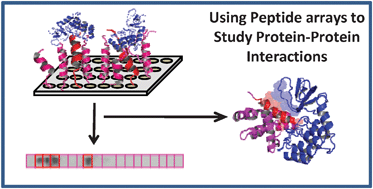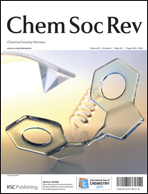Screening of arrays and libraries of compounds is well-established as a high-throughput method for detecting and analyzing interactions in both biological and chemical systems. Arrays and libraries can be composed from various types of molecules, ranging from small organic compounds to DNA, proteins and peptides. The applications of libraries for detecting and characterizing biological interactions are wide and diverse, including for example epitope mapping, carbohydrate arrays, enzyme binding and protein–protein interactions. Here, we will focus on the use of peptide arrays to study protein–protein interactions. Characterization of protein–protein interactions is crucial for understanding cell functionality. Using peptides, it is possible to map the precise binding sites in such complexes. Peptide array libraries usually contain partly overlapping peptides derived from the sequence of one protein from the complex of interest. The peptides are attached to a solid support using various techniques such as SPOT-synthesis and photolithography. Then, the array is incubated with the partner protein from the complex of interest. Finally, the detection of the protein-bound peptides is carried out by using immunodetection assays. Peptide array screening is semi-quantitative, and quantitative studies with selected peptides in solution are required to validate and complement the screening results. These studies can improve our fundamental understanding of cellular processes by characterizing amino acid patterns of protein–protein interactions, which may even develop into prediction algorithms. The binding peptides can then serve as a basis for the design of drugs that inhibit or activate the target protein–protein interactions. In the current review, we will introduce the recent work on this subject performed in our and in other laboratories. We will discuss the applications, advantages and disadvantages of using peptide arrays as a tool to study protein–protein interactions.

You have access to this article
 Please wait while we load your content...
Something went wrong. Try again?
Please wait while we load your content...
Something went wrong. Try again?


 Please wait while we load your content...
Please wait while we load your content...